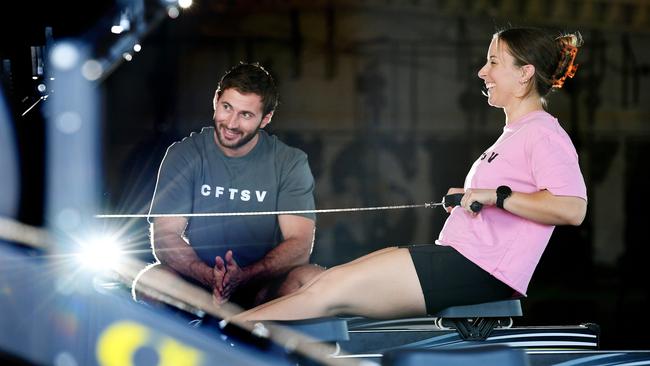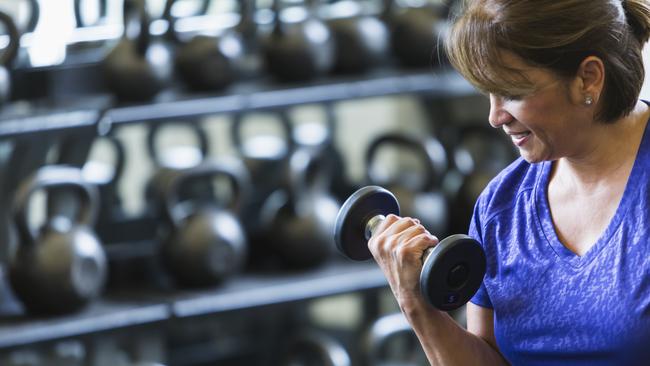What happens to your body when your workouts are too intense
Rhabdo, a condition when your muscle tissue breaks down, can lead to kidney damage and even death.

We’ve all been subjected to fitness instructors barking at us to work harder. What happens if you push past your limits?
Players on the Tufts University men’s lacrosse team found out the hard way recently after a 45-minute workout with a Navy SEAL left nine members out of 50 people hospitalised with a condition called rhabdomyolysis. They’ve since been released.
Rhabdo, as it’s often called, happens when muscle tissue breaks down and releases proteins and other substances into the blood. It can lead to kidney damage and failure, dangerous heart rhythms, seizures and even death.
The biggest symptoms that indicate you may be developing rhabdo are dark red or brown urine, and intense muscle pain at rest that persists after several days.

Rhabdo isn’t common, but there are some indications that cases are happening more often. A 2021 study that looked at reported cases from 2000 to 2019 found a 10-fold increase in rhabdo hospital visits in the U.S. between the first and second decade studied.
The trigger is most often an intense workout, but it can also be triggered by trauma to the muscles, like a hard fall or a burn.
Those at highest risk were young men. Rhabdo is also more common in people with sickle cell trait, a genetic blood disorder.
Doctors and researchers point to the popularity of intense workouts like HIIT or CrossFit, year-round sports training, coaches pushing people harder, as well as a greater awareness of the condition. Increasing the difficulty of your workouts gradually over time, staying hydrated before, during, and after exercise, and monitoring your heart rate can help stave off the condition.
What raises your risk
Shaun Johnson, a 40-year-old fitness buff, regularly works out at a HIIT gym in Phoenix and teaches classes there.
On Memorial Day, she decided to do a Murph workout — a popular challenge named after a Navy SEAL — which consisted of a 1-mile run, 100 pull-ups, 200 push-ups, 300 squats and another 1-mile run wearing a 20-pound weighted vest.
“I pushed myself far beyond many levels for me,” she says.
Within an hour of the workout she couldn’t straighten her arms, which had swelled up. The next two nights she slept horribly. She noticed her heart rate was irregular and started having brain fog. By Wednesday her muscles were inflated like Popeye, she says.
One of her coaches mentioned rhabdo. When she noticed her urine was brown she went to the urgent care emergency room. She ended up being admitted to the hospital for six days with an IV drip.
Her arms still feel weak and though she started working out about a month ago, she says she’s exercising at about 20% capacity compared to before. “I’ve been going very slow,” she says.

Unfortunately, there’s no definitive way to tell whether you’re pushing yourself so hard that you’re likely to develop rhabdo while you’re exercising. Feeling like you’re working hard is fine, but pain, nausea and muscle weakness mean you’re overdoing it, says Abbi Lane, an assistant professor of applied exercise science at University of Michigan School of Kinesiology.
The condition is more commonly associated with weightlifting than cardio, some doctors say, but can result from any prolonged, high-intensity exercise.
Normal exercise won’t put you at risk for rhabdo, says Adam S. Lepley, an assistant professor and director of the Michigan Performance Research Laboratory at the University of Michigan School of Kinesiology. The risk comes from “excessive physical exertion,” he says.
Someone who doesn’t exercise and takes an intense, high-level one-hour spin class may be at risk because it’s a big change for their body, while someone with a higher fitness level has a higher threshold, says Dr. Kelly Estes, an emergency medicine and primary care sports physician at Cleveland Clinic.
There’s no official accounting of overall rhabdo cases — which don’t always send people to the hospital — but one study back in 1995 estimated cases at about 26,000 a year. The condition is probably undercounted because people don’t always go to a doctor if they have milder symptoms, says Estes.
Some people with genetic conditions like Duchenne muscular dystrophy are also more at risk of developing rhabdo, as well as people with certain metabolic or mitochondrial conditions.
Prevention and treatment
A few precautions can help. Make sure you’re drinking enough water, and that your urine is pale yellow.
Monitoring your heart rate during a workout can be helpful, says Lane. Start out in a moderate zone — working out at 60% of your maximum heart rate — and slowly work up to working out at higher intensity levels. Working out above 85% of your maximum heart rate can improve fitness but should be done cautiously, says Lane.
Doctors can diagnose rhabdo by testing your blood for levels of creatine kinase, or CK, an enzyme that leaks into the bloodstream when muscle is damaged. Rhabdo can also be diagnosed with a urine test for levels of myoglobin, another protein released when muscle breaks down.
Treatment typically involves getting an IV fluid or different electrolytes. Extreme cases that result in kidney damage may require dialysis.
The Wall Street Journal



